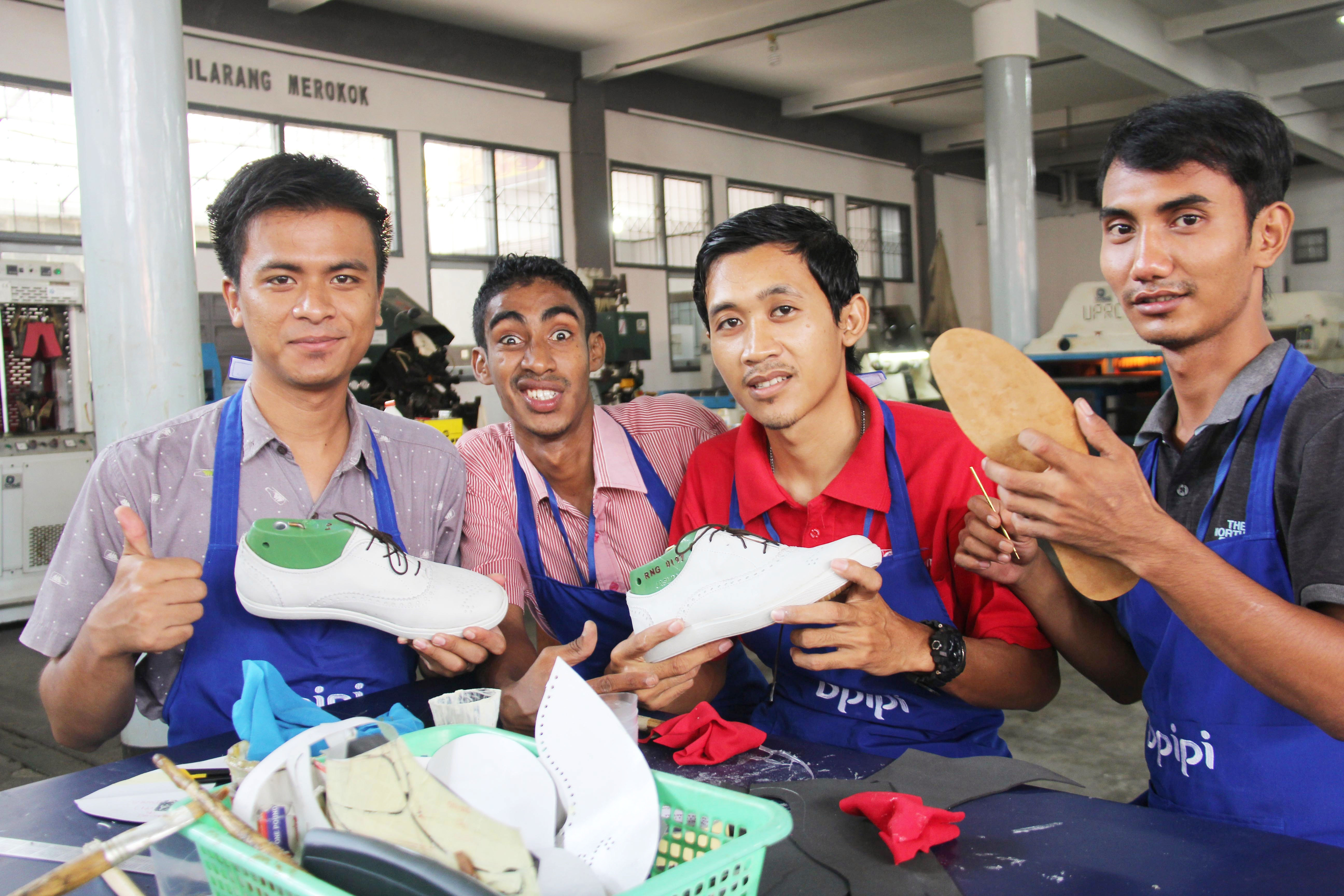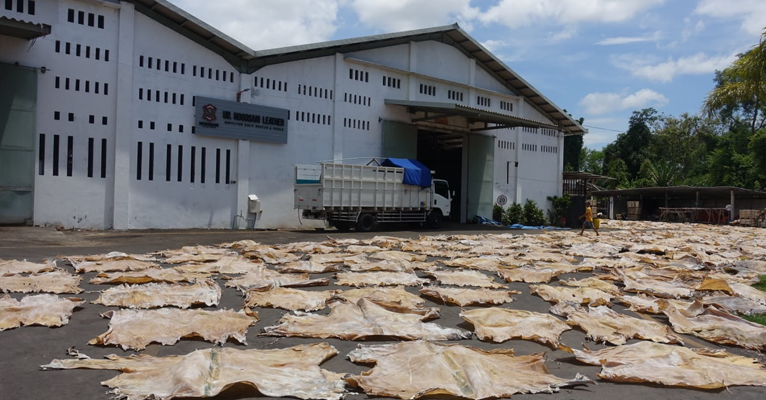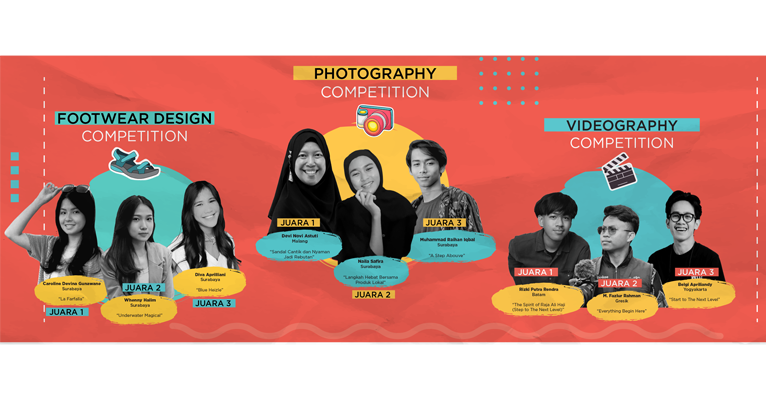Industri kulit sering kali dikaitkan dengan tantangan keberlanjutan, namun UD Nogosari Leather dari Kabupaten Lumajang…

Learn to Make Footwear and Leather Products Easier at BPIPI
By Rahasih Lupita Maheswari and Anissa Mei P.
Now learning to make footwear and leather products is easier. Learning footwear does not need to be confused anymore to study alone or look for qualified people. The Indonesian Shoe Industry Development Center provides adequate training services for the wider community. Learning techniques for producing footwear, leather products, or management consulting can be done with BPIPI. BPIPI instructors who are qualified in their fields are ready to assist people who want to learn in the manufacture of footwear and leather products.
Types of Training Services at BPIPI

There are two types of training services at BPIPI, including independent training and regular training. In self-training, learn to make footwear and leather products tailored to customer requests and needs. Customers can determine the model and type of footwear or leather products to be studied. In addition, BPIPI independent training makes it easy to learn how to make footwear and leather products anywhere and anytime. Independent training conducted at BPIPI is ready to facilitate dormitories, classrooms, and workshops with adequate tools in the learning process.
Regular training is training or technical guidance aimed at SMEs. To increase the capacity and quality of SMEs in Indonesia, the government is trying to facilitate IKM actors by providing free education and training so that SMIs in Indonesia can compete in the global arena. BPIPI surveyors carry out the participant recruitment process by going directly to footwear craftsman areas in Indonesia, then coordinating with the local Industry Office to recruit regular training participants. Participants in the technical guidance consisted of 20 people from Aceh to Papua. BPIPI's target is that participants who participate in the training can be evenly distributed throughout Indonesia. From 2003 to 2018, the reach of BPIPI has reached 32 provinces in Indonesia with 2,593 alumni.
The type of regular training is adjusted to the needs of SMEs in the field. The following are several types of regular training that are often held for SMEs, including technical guidance for upper sewing operators, design, assembling, leather products, sewing machine technicians, industrial machine technicians, management, and branding.
Upper Footwear Sewing Operator Technical Guidance

The technical guidance of sewing operators provides participants with basic knowledge on how to sew upper footwear from the process of setting up a sewing machine to sewing. This sewing practice process includes sewing without thread (basic movements, short movements, long movements). This movement will train reflexes or balance between mind and feet in making movements according to the desired sewing machine movement. Sewing practice is continued with the practice of sewing the material with thread, the practice of sewing the upper with non-leather materials (component variations), the practice of sewing the upper with leather.
Footwear Design and Technology Technical Guidance

Technical design guidance, starting with the shoe design drawing technique in 2 ways, namely manually (hand sketch) and using the Corel Draw program, which is combined with the appropriate line and color techniques in the shoe design through the "tools" available on the computer (Corel Draw program). . The advanced learning process enters an understanding of knowledge about chemicals (shoe coloring) to the process of shoe coloring procedures. The practice of making shoes starts from making shoe patterns so that you know the special specifications in making shoe patterns starting from making basic patterns, finished patterns, to the pattern breaking stage which includes making component patterns and shoe pattern trials. The training continued with the process of cutting materials, both imitation and leather, whose patterns had been determined and were correct, because they had gone through a series of trial patterns, followed by sewing, gluing, and assembling processes.
Assembling technical guidance

Assembling technical guidance is a shoe assembly stage that starts from the practice of making patterns for the insole and outsole parts. After that, make the bottom for the insole and outsole. Continuing, the method of lasting shoes made of leather and non-leather, starting from the preparation stage to opening/withdrawing the upper/top of the shoe to the bottom/bottom of the shoe. Combining / assembling between the upper part of the shoe (upper) with the lower part of the shoe (sole) focuses more on the correct technique in assembling. The final process, checking the shoes that have been made, after being removed from the reference, namely by cleaning the shoes from the remaining glue, installing the insole, cutting out excess threads, etc.
Leather Products Technical Guidance

Leather product technical guidance is training in making leather products such as bags, wallets, belts, etc. This training starts from making a master bag pattern on pattern paper to make bag pattern fragments. The next practice, the making of bags begins with the process of cutting both imitation and leather with a pattern that has been made and has been practiced. After cutting proceed with gluing, sewing, assembling / assembly and finishing.
Sewing Machine and Industrial Machinery Technician Guidance

Further technical guidance, sewing machine technicians begin by providing knowledge of standard operating procedures for using machines and the functions of components so that participants are able to use sewing machines correctly. This training invites participants to repair High Speed and Low Speed Sewing machines. Meanwhile, industrial machine technicians are more focused on repairing skiving/seset machines, zig-zag machines, and post bed roller machines.
Management and Branding Technical Guidance

This final technical guidance on management and branding is more theoretical than any other technical guide, which consists mostly of practice. This training invites participants on how the participants build brands and creative strategies in running a business so that they can compete in the market.
Education and Training Services at BPIPI Using Information Systems

Achieving BPIPI's vision to create a professional service center towards a globally competitive shoe industry, BPIPI's services are designed to be more user-friendly. The existence of an information system that is used for several lines of BPIPI services as a means of public information sources for BPIPI services and performance. The information system is made to make it easier for customers to reach services at BPIPI.
Information systems support education and training at BPIPI in the form of social media, websites, and integrated applications. Information related to education and training, registration, and evaluation can be accessed through the information system. In this information system, Footwear Knowledge material is a form of information and sharing related to footwear for the wider community. Training schedules and independent and regular training packages can also be accessed through the information system.
The BPIPI information system can be accessed through the website bpipi.kemenperin.go.id, the BPIPI official apps application that can be downloaded on the play store and several social media that can be accessed such as Facebook, Instagram, and LINE.
The information system at BPIPI is still undergoing development so that it can provide the best service to the community. Not only for education and training, but also for other service systems such as test labs and footwear design development programs. With the existence of an extensive information system, it is hoped that knowledge services about the world of IKM footwear and leather products can be accessed by anyone, from various circles, and from any media.
Check out this video:



This Post Has 0 Comments